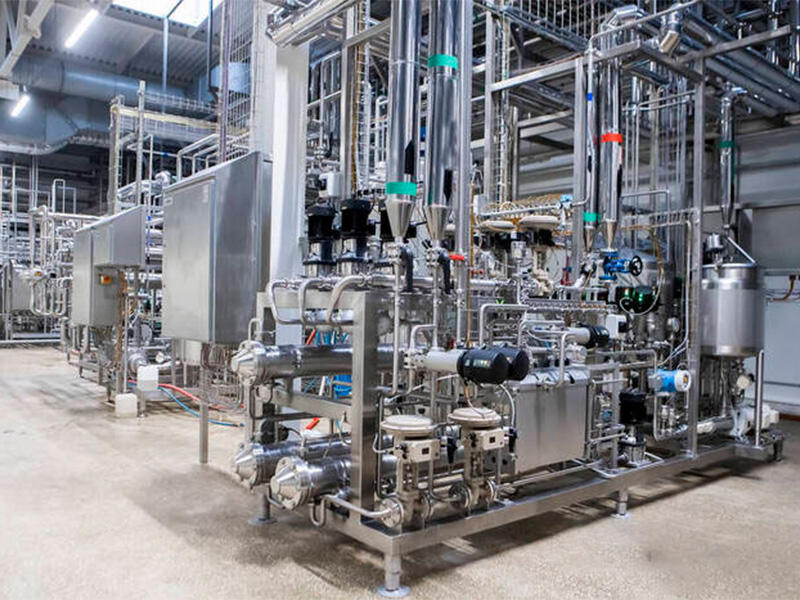GH4648 is a nickel-chromium-based precipitation hardening deformed high-temperature alloy. Its operating temperature is below 900 degrees Celsius, and it can be used for a short period of time below 1100 degrees Celsius. The addition of high chromium to the alloy gives it good resistance to hot corrosion. At the same time, the alloy has moderate strength, good fatigue resistance and creep resistance, good cold working performance and welding performance.
Specifications |
In stock, can be customized according to customer requirements |
Form |
Bar,Plate |
Classification |
Superalloy |
Density |
Melting Point |
thermal conductivity |
Specific heatcapacity |
elastic modulus |
Resistivity |
Linear expansion coefficient |
Elastic modulus |
g/cm3 |
℃ |
λ/(W/m·°℃) |
J/kg:·℃ |
GPa |
uΩ ·m (20℃) |
a/10-6℃-1 |
GPA(20℃-900℃) |
p=8.28 |
1336℃-1353℃ |
13.(100℃) |
498 |
223-170 |
p=126.71x10-6Ω·m |
11.6(25-100℃) |
212-155 |
Alloy |
% |
Fe |
Cr |
Ni |
C |
W |
Si |
Mo |
Al |
Ti |
Nb |
P |
Ce |
B |
S |
Mn |
GH4648 |
Min |
1.0 |
32-35 |
Balance |
0.10 |
4.3-5.3 |
0.4 |
2.3-3.3 |
0.5-1.1 |
0.5-1.1 |
0.5-1.1 |
0.015 |
0.03 |
0.008 |
0.01 |
0.5 |
Alloy status |
Tensile strengthEbMPa2 |
yield strength RP0.2 N/mm |
Elongation A/%≥ |
HBS |
solution treatment |
≥780 |
≥345 |
≥25 |
≥293 |
Microstructure evolution ofGH4648 alloy barduring uniform annealing;
(1) When GH4648 alloy is processed below 1180°C, the MC type carbides in the as-cast structure transform to M2C. Change; when treated above 1200°C, pores are easily formed at the MC carbide/matrix interface.
(2) After homogenization treatment at 1180°C × 45h, the grain boundaries and intragranular MC carbides become regular, the M23C6 carbide is well combined with the matrix, and the Cr element distribution is uniform.
(3) Keeping at 1180°C for 45 hours is the ideal homogenization treatment system.
GH4648 alloy barsare used to manufacture advanced aero-engine combustion chamber parts and other hot-end parts and are well-used in mass production.

The manufacturing process of stainless steel and alloys involves multiple steps to transform raw materials into flat,rectangular sheets or plates made of stainless steel and alloys. Here are a few key steps for stainless steel and alloys:

Molten stainless steel and alloys are cast into large ingots or billets through a casting process.

During the hot rolling process,the thickness of the steel ingot is gradually reduced and elongated to form long strips or coils.

Annealing involves heating stainless steel and alloys to a specific temperature and then slowly cooling it.

Cold rolling is carried out through rolling mills to reduce thickness to meet customer specifications.
Wuxi Walmay Metal Co,Ltd is a comprehensive processing group of Alloy Steel、Forged Parts Fitting、Titanium Alloy、Stainless Steel、Special Welding Wireseries, and more than 800 specifications.
Our group has been engaged in the domestic and global market for more than ten years with rich steel experience and can offer professional advice for customers inapplications with different materials.
Machine cutting
Sheet cutting
plasma cutting
Dynamic waterjet cutting
sawing
Plank leveling
polishing
laser cutting
laser cutting
production cutting
Long product cutting
Bar and structural cutting
polishing
Heat treatment and annealing: Wuxi Walmay Metal can heat treat certain 400 series stainless steels.
Material Reliability Identification (PMI): Wuxi Walmay Metal can complete this testing in-house.
Ut Testing: Ultrasonic testing (UT) uses high-frequency sound energy to inspect and measure stainless steel products.
Our professional sales team answers your questions within 24 hours.
Copyright © Wuxi Walmay Steel Co.,Ltd All Rights Reserved